- Home
- T. J. English
The Corporation Page 2
The Corporation Read online
Page 2
“That depends,” said Jesús.
“Well, we arrested un negro. He tells us he sold some guns to you. Those guns were stolen from the police.”
Jesús thought about it for a few seconds and then said, “Oye, listen, I can’t tell you where anything is or who anyone is, so just let me know what else you need from me.”
Battle took full stock of him and said, “You are a real man. You don’t snitch on your partners. That is a good quality.”
From then on, Jesús and Battle became friendly. The street hustler and the cop occasionally traded information when it was mutually beneficial.
Many years later, far from Havana, Jesús would go to work for Battle’s criminal organization in the United States. He is said to have performed many functions, including serving as a hit man.
Alliances are what Havana in the 1950s was all about. Another underworld figure Battle came to know, who in the pecking order of crime was in a universe far above that of Jesús, was Santo Trafficante Jr.
Battle was introduced to Trafficante by Martín Fox. Though the Tropicana nightclub was known as the only club in town that was not owned or co-owned by the Havana Mob, the gambling concession there was controlled by Trafficante. Fox and Trafficante had a decent working relationship, and for the club owner to introduce the young vice cop to one of the premier mobsters in town was the kind of thing that made their world go round.
The Trafficante family was legendary in Cuba. Back in the 1930s, Trafficante’s Sicilian-born father was among the first mafiosi to establish a beachhead in Cuba. Santo Trafficante Sr. had been a founding father of the Mafia in Tampa, Florida, a city with a vibrant Cuban American population going back to the days of the Spanish-American War. Trafficante Sr. did criminal business with Cubans in Tampa. He learned to speak fluent Spanish, which had similarities to his native Sicilian. He came to know and appreciate Cuban culture: cigars, Spanish food, and a strong patriarchy with the women at home raising the family and the men out in the street taking care of business.
From early on, bolita was a primary aspect of the Mob’s operations in Tampa. And then there was heroin. In the 1930s, Trafficante Sr. established Cuba as a major transshipment point for heroin coming from the city of Marseille, on the French Riviera.
By the 1950s, Trafficante Sr. was old and in his last days (he died in 1954). Heroin was no longer a major aspect of the Mob’s business in Cuba. Meyer Lansky had taken over, and he made it clear that the narcotics business was out. There was no need to jeopardize the casino gambling empire they were creating on the island by bringing down the wrath of the Federal Bureau of Narcotics (FBN). Already in 1947 the FBN had brought about the deportation of Charles “Lucky” Luciano, a prominent heroin smuggler, from Cuba. From then on, the Havana Mob mostly stayed clear of the dope business.
Santo Jr. had a prickly partnership with Lansky, but he understood. With his wire-framed glasses and mostly placid demeanor, he had the look of a banker, not a gangster. He considered himself to be a businessman—granted, one who ordered hits on rivals and associates and spent his entire day scheming to commit crimes. But he was part of a proud tradition. And in Havana, that tradition had coalesced around the tried-and-true business of casino gambling, which wasn’t even illegal in Cuba.
It didn’t take long for Trafficante and Battle to form a partnership. Trafficante had other ongoing criminal rackets in Cuba, including the importation of bootleg cigarettes. Battle kept the mafioso abreast of gossip both in the law enforcement world and on the street.
Eventually, José Miguel was entrusted with an important job. Each week, he met with emissaries of Trafficante’s and picked up a suitcase or suitcases filled with cash. It was his responsibility to see that these were delivered to the presidential palace, where they eventually made their way to the president. These payments came from the “skim” at the casinos, the money that was pilfered from the counting rooms and delivered into the hands of the Mob. In Havana, there was no gaming commission. In effect, the Mob was the gaming commission.
Batista’s estimated weekly payment was $1.5 million.
Everyone benefited. The mobsters got rich. President Batista got rich. And José Miguel Battle played a small but pivotal role in a criminal alliance that would go down in history.
WHEN IT ALL CAME CRASHING DOWN, ON NEW YEAR’S DAY 1959, BATTLE AND MANY others did not initially see any reason to panic, even though the signs were not good. Batista fled the city by plane under cover of darkness. Trucks filled with guerrillas flooded into the city. One of the first actions of the people, after taking to the streets in celebration, was to trash the casinos. Slot machines and gambling tables were dragged out into the street, smashed, and set on fire. To those who were pro-Castro, the casinos had become a prime symbol of corruption and imperialist oppression.
Even so, there was reason to believe that the gaming industry might be preserved under the Castro regime. The profits generated by the casinos were too potentially remunerative for them to be shut down. As for Battle, he still had a job as a police officer, even though to have been a cop during the Batista dictatorship, with all the graft and corruption, would not put him in good standing with the new revolutionary government.
Battle stayed in Havana, but things quickly turned sour. After a period of negotiation, Castro shut down all the casinos. Battle was demoted from the vice squad to the transportation bureau. He was now a traffic inspector. He hated the job and began planning a way, as so many of his friends and associates had done, to escape the island.
On December 28, 1959, one year after Batista fled the island, Battle, through connections, was able to secure a U.S. tourist visa. He left Cuba by boat. His port of entry was New York City. He stayed at the Mayflower Hotel, at Central Park West and 61st Street. There were other Cubans who had settled in Manhattan; mostly they lived in uptown tenement apartments in the area of St. Nicholas Avenue and Fort Washington Avenue. A key point of connection for many were the roving poker games that popped up in the backs of Latin restaurants and in people’s apartments. There Battle met a number of Cuban émigrés who would become important players in his future as a gambling boss.
Occasionally, Battle made the short trip across the river to Union City, New Jersey, which was also becoming a popular locality for Cubans to settle. He bought into a bar in Union City called Johnny’s Go Go Club, located on the corner of 48th Street and Palisade Avenue. The bar had female go-go dancers. Battle’s investment was minimal, but it served its purpose as a beachhead in the new world.
The idea was for Battle to get settled and then somehow get his wife and young son out of Cuba. It was a struggle then being undertaken by thousands of exiles, part of a diaspora from an island that was being torn asunder by the consequences of revolution.
One person who met Battle during this period was Abraham Rydz, a Polish Jew who moved to Cuba with his parents at the age of two and grew up in Havana. The two men knew each other from gambling days back in Havana during the Batista era. They first met at a card game in the bustling district of Vedado. Now, a few years later, here they were as displaced refugees in New York and Union City, where they met once again over cards.
Rydz heard that Battle had a bar and was looking to establish roots in the area. Eventually they would become partners in a gambling enterprise that would make them both rich, but that was many years away. “At the time,” said Rydz, “he had nothing. None of us did. We were struggling to survive.”
In April 1960, Battle overstayed his visa—for a good reason. On the exile grapevine, he had been hearing some exciting news that the U.S. government was recruiting people for a secret invasion of Cuba. This was almost too good to be true. Many Cubans who had left the island dreamed of overthrowing Fidel and taking back their country. With the power of the U.S. military behind them, and the support of a secret organization most had never heard of called the Central Intelligence Agency, how could they lose?
Battle traveled to Miami and booked a room at the So
uth American Hotel, on 2nd Street and Second Avenue. With more than a thousand fellow Cuban refugees, he assembled in a hangar in the adjacent city of Hialeah. It was explained to the men by representatives of the CIA that the U.S. government was committed to overthrowing Castro and helping to establish a democratic government in Cuba.
Battle was down for the cause. Within days, he shipped out, along with hundreds of other Cuban exiles, first to a secret camp in the Homestead area of South Florida, and than on to a training facility hidden in the hills of Guatemala. It was the beginning of a new adventure that Battle and the others believed would lead them all back to their homeland, where they could live as proud Cubans in the country they loved.
THE STORY OF CUBAN ORGANIZED CRIME IN AMERICA HAS ITS ROOTS IN WHAT WOULD become known as the Bay of Pigs invasion. The overwhelming majority of men who signed on for this covert operation, which was initially put in motion by the administration of Dwight D. Eisenhower and the CIA, had no criminal inclinations. On the contrary, the men who were chosen were carefully vetted to make sure they did not have criminal records or reputations that would in any way damage the image of the operation. By and large these men were driven by patriotism and ideology. Their goal was to take back Cuba. The goal of the U.S. government, on the other hand, had more to do with the Cold War, a battle against the encroachment of communism in the Western Hemisphere, with Cuba as merely a piece on a chessboard.
Either way, all concerned were embarking on a course from which there was no return. Men like José Miguel Battle, forced out of their country by what they considered to be an undemocratic and vindictive process, gave their lives over to the cause with a dedication bordering on zealotry.
The Bay of Pigs invasion would become one of the most notorious military failures in U.S. history. The men who undertook the venture were put through a further process of humiliation that had a tremendous impact on their lives, and on the fortunes of both Cuba and the United States. Along with the political and historical consequences, the failed invasion would indirectly become the seed for a criminal underworld in America known as the Corporation.
This criminal enterprise was based on bolita, the numbers racket. Under the stewardship of Battle and others, it would become a multibillion-dollar operation. But the venture never shook its roots as an undertaking based in the politics of revolution and exile. The failure of the Bay of Pigs invasion would spawn further attempts to kill Castro and overthrow the Cuban government. These secret plots were undertaken by an alliance between the CIA and militant Cuban exiles, many of whom were veterans of the invasion. This narrative thread would run through American Cold War history like a tripwire, a bomb ready to explode. The Watergate burglary, political assassinations in the United States and overseas, the Iran-Contra scandal—these were just a few of the events that grew out of the anti-Castro movement, which became a catchphrase to describe many anticommunist efforts of the CIA throughout the second half of the twentieth century.
The story of the Corporation takes place in the shadow of this larger political narrative. The anti-Castro legacy is the context for the story of Cuban American organized crime, which rivaled the Mafia in its scope and body count.
José Miguel Battle Sr. rose from being a vice cop in Havana to being the Godfather—El Padrino—in America, but the story of the Corporation involves much more than one charismatic Mob boss. More than just a criminal operation, the Corporation was a way of life for those who became involved in it. There were the boliteros and gangsters, and the many lawmen who, over the years, became part of the effort to bring them down. There were also wives, girlfriends, sons, daughters, cousins, crime victims, snitches for the police, undercover agents—an entire generation of people who became caught up in an outrageous criminal history that lasted for nearly forty years.
Initially, cops in the United States trod lightly when it came to the Cuban Mob. Along the way, Battle and other individuals were prosecuted, but not for being part of a criminal conspiracy. In some cases cops were bought off, and in others it was because the Corporation had a certain mystique. Links to the CIA and the underground anti-Castro movement through organization such as Alpha 66 and Omega 7, groups that carried out political assassinations in the United States and South America, made it seem as though the Corporation was untouchable. Over time, law enforcement zeroed in. In courtrooms in New York and Miami, the Corporation was bled dry and dismantled through indictments and convictions.
This book chronicles the rise and fall of Battle’s organization from the Bay of Pigs invasion to the present day. Along the way, Cuban gangsters forged a partnership with the Mafia and then went to war with the Italians over control of lucrative numbers parlors in New York. This war was bloody, with much collateral damage. Eventually, mayhem and murder became a way of life, with revenge plots that spanned many years and wild shootouts on the streets of Miami’s Little Havana and all around New York City and New Jersey. Though the main character of the story is El Padrino, this saga unfolds through a kaleidoscope of characters, male and female, and from many points of view. The canvas is large, because the story of the Corporation is the story not only of a criminal enterprise but also of a generation and a culture defining itself through a brutal version of the American experience.
The story of Cuban organized crime in America has never been fully told. For some, its parameters might seem exotic—murder plots are hatched at cockfights in Key Largo and carried out at Latin nightclubs in Harlem or Little Havana, all of it set to an Afro-Cuban beat. But the truth is that the narrative at play in the story of the Corporation adheres to a cherished American archetype. Irish, Italian, and Jewish gangsters have blazed this trail before, and newer versions of ethnic underworlds—African American, Asian, Mexican—have added their own unique flavors. The Horatio Alger myth—the self-aggrandizing trajectory of rags to riches, topped off with a dash of rosy optimism and American exceptionalism—may be the preferable myth to some. But stories of organized crime and the underworld are just as deeply rooted. And so room must finally be made on the shelf for this Cuban version of the classic American story.
1 Battle’s birth name in Cuba was Batlle, pronounced “Bat-yey.” Upon arrival in the United States, he changed both the spelling and pronunciation. The U.S. version, which became his official name in U.S. records and newspaper reports, and was the preferred usage by Battle and his family, is used throughout this book.
2 Jesús agreed to be interviewed for this account with the stipulation that his real name would not be used.
PROLOGUE
IDALIA FERNANDEZ DIDN’T LIKE TO BE INTERRUPTED WHILE WATCHING GENERAL Hospital. Every afternoon at 3 P.M., she turned on the popular, long-running soap opera. While watching the show, she didn’t answer the phone, and sometimes she wouldn’t answer the door either. Lately she hadn’t been answering the door anyway, because Idalia and her hit man boyfriend were on the run and hiding out in the Miami suburb of Opa-Locka. They were hiding from Cuban gangsters who were trying to kill them.
Even so, while on the lam, Idalia rarely missed an episode of General Hospital.
On the afternoon of June 16, 1976, she was watching the program when suddenly she heard a deafening cacophony of shattering glass and splitting wood.
Terrified, Idalia looked up and saw three men crashing through the apartment’s jalousie door, glass flying, and rushing into the room. One of the men was Julio Acuna, whom she knew as Chino, a gangster from New York City. He was holding a big gun with a silencer on it, and he was coming straight at her with a demented expression on his face.
For more than a year, Idalia and her boyfriend, Ernesto Torres, had been fleeing on trains and in cars, bouncing between cheap motel rooms and apartments, hoping to outrun the devil. It was all Ernestico’s fault. Idalia knew when she first met him in Union City, New Jersey, that he was a gangster who made his money from bolita, as the Cuban numbers racket was known. Idalia was Puerto Rican, but she knew all about bolita. It was hugely popular among L
atinos of every nationality, many of whom placed a daily wager on a number or series of numbers. It was just like the lottery, now a state-run, legal form of betting. But back then it was an illegal enterprise controlled by organized crime. In New Jersey and all along the East Coast, the crime entity that controlled bolita among Latinos was sometimes called the Cuban Mafia. It was an organization that some in U.S. law enforcement said was more dangerous than La Cosa Nostra.
La mafia cubana was overseen by José Miguel Battle Sr., El Padrino, the Godfather. One of his most feared henchmen was Chino Acuna.
Idalia knew all this because not long ago, in Union City, her boyfriend Ernestico had worked for Battle and was friendly with Chino. But Ernestico had a falling-out with the organization when he kidnapped and shot one of its most valued bankers. This was an unfathomable act of betrayal against the organization, and so Ernestico was marked for death. One afternoon outside his and Idalia’s apartment in Cliffside, New Jersey, a car bomb went off that destroyed Ernestico’s car. He narrowly missed being blown up. A few days later, he was shot in the side outside a flower shop in upper Manhattan. Ernestico didn’t even wait for his wounds to heal. He and Idalia wrapped up the bullet wound in his side and fled by train to Miami. They arrived on New Year’s Day 1976.
Ever since, they had been slinking around like rodents, living off the land. No one was supposed to know where they were hiding out. But three weeks earlier, in the city of Hialeah, Ernestico had been targeted for death once again. He was standing on the sidewalk in front of the building where they were living when two men driving by in a car opened fire, hitting him in the forearm, shattering his radius bone. This had necessitated Idalia and Ernestico’s moving for the fourth time in the six months they’d been hiding out in Miami. At the current location in Opa-Locka, the only people who knew they were there were the lady who rented them the apartment and a kid from whom they ordered groceries to be delivered from Los Hispanos Market.

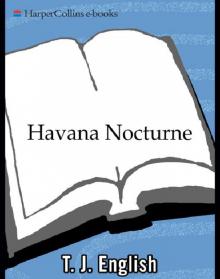 Havana Nocturne
Havana Nocturne Paddy Whacked
Paddy Whacked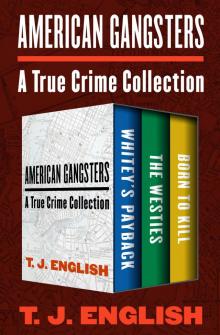 American Gangsters
American Gangsters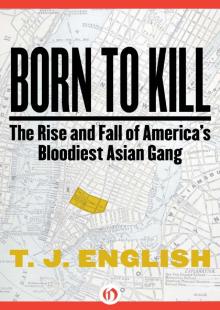 Born to Kill
Born to Kill Westies
Westies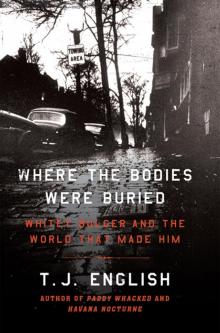 Where the Bodies Were Buried
Where the Bodies Were Buried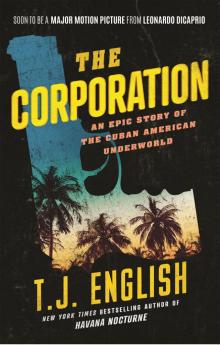 The Corporation
The Corporation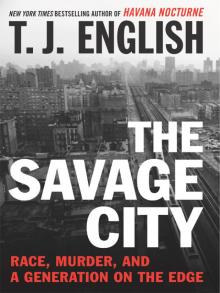 The Savage City
The Savage City